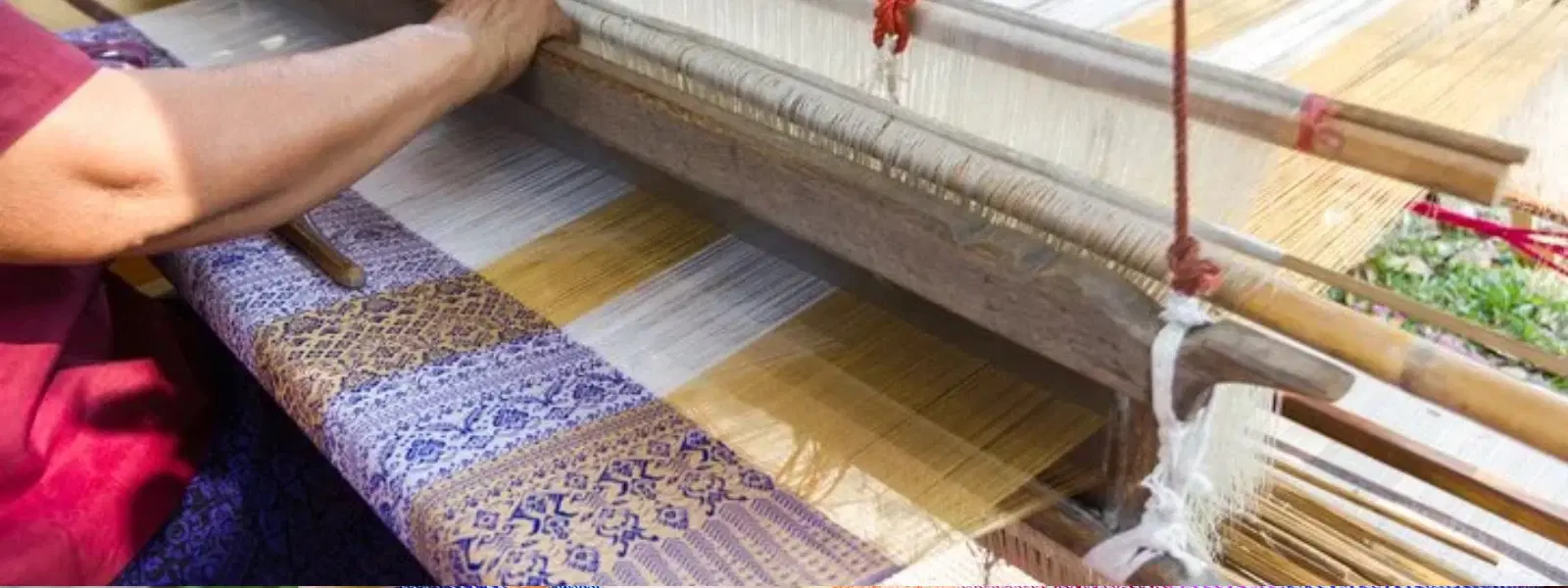
Hotels
•03 min read

Tangaliya shawls captivate the senses with their intricate weaves and vibrant patterns that echo the rich heritage of Gujarat. Originating in Surendranagar, this centuries-old craft is much more than a textile art—it is a living tradition deeply embedded in the cultural fabric of India. In this post, you will learn about Tangaliya shawl weaving, its historical roots, the unique techniques employed by its artisans, and its enduring cultural significance.
Tangaliya weaving finds its roots in Surendranagar, Gujarat, where the Bharwad community has practiced this craft for generations. Utilizing a unique extra-weft technique known as "daana weaving," artisans create raised dot patterns that give each shawl its distinctive texture and charm. This traditional art form represents a blend of skill, heritage, and a deep passion for preserving the cultural art of handloom weaving.
Tangaliya shawls are a proud symbol of Gujarat's folk textiles and a shining example of Indian heritage weaving. With a Geographical Indication (GI) tag affirming its authenticity and unique origin, efforts continue to preserve this extraordinary traditional craft. Each shawl is not simply a garment but a narrative of the region’s vibrant history and communal artistry.
The process of crafting Tangaliya shawls is painstaking yet mesmerizing. Artisans employ manual techniques on pit looms to weave each piece with finesse. The selection of materials—ranging from merino wool and eri silk to acrylic wool—ensures that every shawl is not only visually striking but also durable and comfortable. The materials play a pivotal role in adding texture and a tactile charm to the final product.
What sets Tangaliya shawls apart are the specialized techniques used by the weavers. Embroidered beadwork and carefully crafted geometric motifs enhance the overall design, amalgamating modern aesthetics with age-old methods. The signature raised dots, a hallmark of Tangaliya weaving, add depth to the patterns, making each shawl a masterpiece of intricate detailing and thoughtful craftsmanship.

The Bharwad community is the lifeblood of Tangaliya shawl weaving. This community has nurtured the craft from one generation to the next, instilling a sense of pride and responsibility to continue this beautiful legacy. The transmission of skills through familial lines highlights a deep commitment to preserving heritage weaving techniques, ensuring that the art remains thriving and relevant.
Despite the undeniable beauty of their work, Tangaliya artisans face significant economic and social challenges. The struggles include limited market exposure and competition from mass-produced textiles. Initiatives spearheaded by organizations like the National Institute of Fashion Technology (NIFT) are making concerted efforts to revive and support this traditional craft, crucial for the community’s sustenance and development.
Tangaliya shawls are renowned for their extraordinary details. The raised dot patterns, crafted with precision, are combined with a rich palette of colors and thoughtful geometric designs. This handwoven art form stands out in both traditional and contemporary wardrobes, making it versatile for various occasions. The combination of textures, hues, and patterns makes each shawl not just a piece of clothing, but a piece of art.
The GI registration of Tangaliya shawls has played a significant role in elevating its status in the global textile arena. Through continuous efforts to promote and revive this art form, Tangaliya weaving is now celebrated as a crucial part of Gujarat's traditional textiles. This recognition underscores the importance of preserving folk practices that embody the spirit and heritage of the region.

Did You Know? Tangaliya weaving is one of the rarest textile arts in India, practiced exclusively in Surendranagar, Gujarat. Its intricate raised dot patterns are created using an extra-weft technique, making each piece a masterpiece of craftsmanship.
Tangaliya shawl weaving is a traditional handloom craft from Surendranagar, Gujarat, known for its raised dot patterns created using an extra-weft technique.
Tangaliya shawl weaving is primarily practiced in Surendranagar, Gujarat, by the Bharwad community.
Tangaliya shawls are distinguished by their intricate raised dot patterns, vibrant geometric motifs, and the use of high-quality materials like merino wool and eri silk.
The GI (Geographical Indication) tag recognizes Tangaliya shawls as a unique product of Surendranagar, Gujarat, helping preserve and promote this traditional craft.
Tangaliya weaving is carried out by skilled artisans from the Bharwad community, who have passed down this craft through generations.
In conclusion, Tangaliya shawl weaving in Surendranagar, Gujarat, stands as a testament to India's rich textile heritage and the unwavering dedication of its artisans. The intricate techniques, combined with deep-rooted cultural traditions, make these shawls a unique representation of Gujarat's folk textiles. Learning about this art not only deepens one's appreciation of traditional craftsmanship but also celebrates the enduring legacy of community-driven heritage weaving.